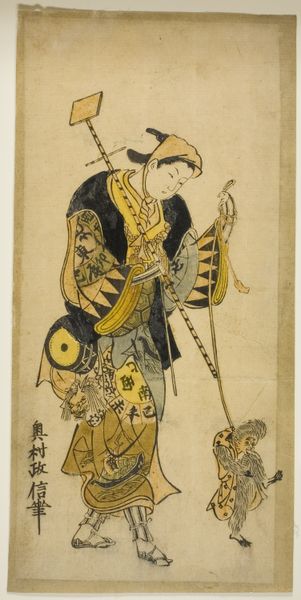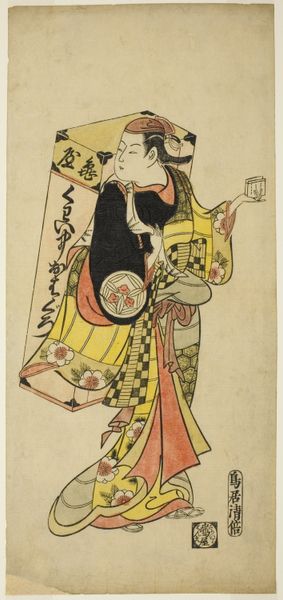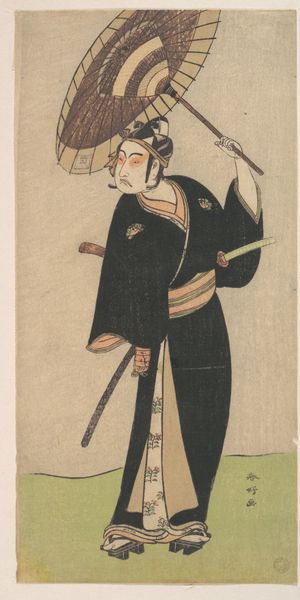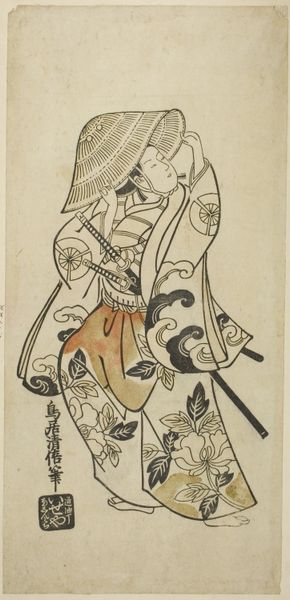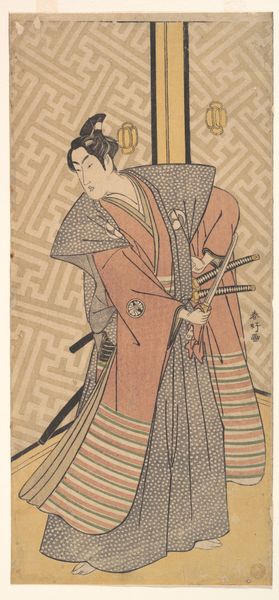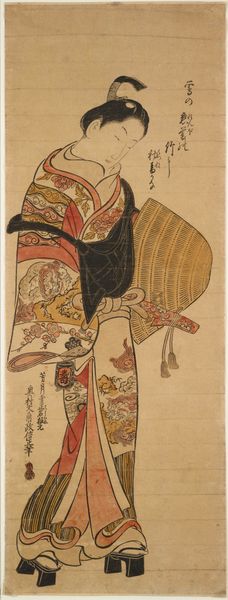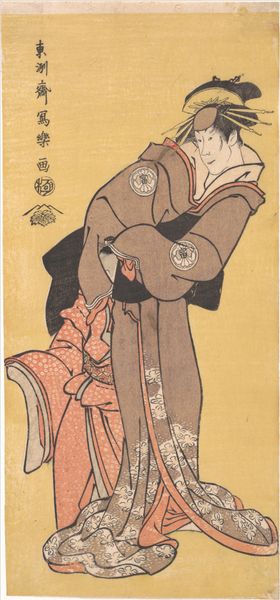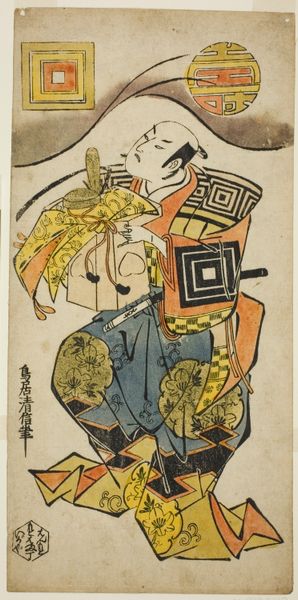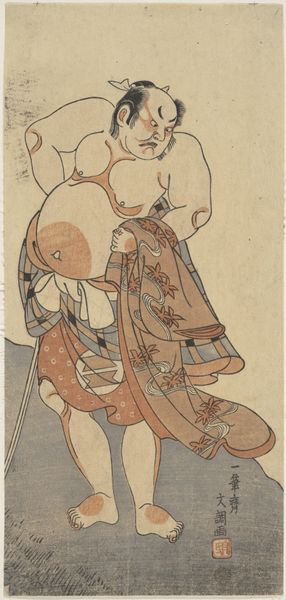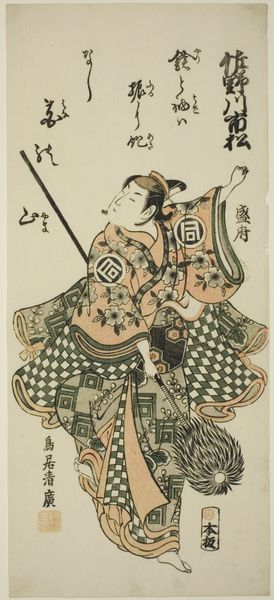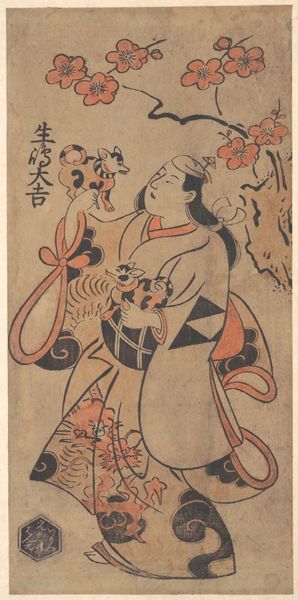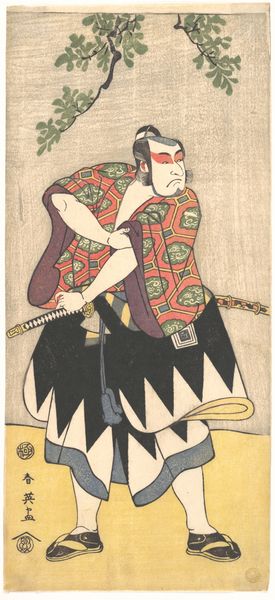
print, woodblock-print
# print
#
asian-art
#
ukiyo-e
#
japan
#
figuration
#
woodblock-print
#
men
#
line
#
genre-painting
#
musical-instrument
Dimensions: 13 1/4 x 6 1/4 in. (33.7 x 15.9 cm)
Copyright: Public Domain
Curator: This woodblock print, created by Torii Kiyotomo between 1710 and 1730, presents Ichimura Takenojo the VIII, a figure from the Kabuki theater. The print offers us a snapshot into the performative arts and the popular culture of Edo-period Japan. Editor: The overwhelming first impression is of elegance distilled through careful lines. There's such refined poise in the way Ichimura holds that flute-like instrument under his hat, and in the gentle curve of his form. A world of gestures can be read, even with only a handful of colours. Curator: Indeed, the deliberate choice of the stylized figure embodies the aesthetics prevalent in Ukiyo-e prints. Kiyotomo’s use of line not only defines form, but also dictates visual rhythm, drawing the eye across patterned textiles and subtle variations in tone. This aesthetic was essential to creating and maintaining a strong sense of cultural identity. Editor: I see how those stylized elements speak to cultural identity. The actor's costume is teeming with symbolic details: those geometric patterns resonate with continuity, a preservation of artistic practices. I keep coming back to his eyes, that gaze averted, yet knowing, somehow encompassing centuries of performative storytelling. What meaning does it convey for you? Curator: Well, the Kabuki actor represented more than simple entertainment. Kabuki was carefully monitored, and the performative spectacle was intrinsically connected to power structures and censorship that informed society at large. These images offered sanctioned, controlled glimpses into worlds otherwise kept under strict governance. Editor: A powerful, multi-layered observation. Considering those layers of power and performance makes the presence of the musical instrument, and even the geometric patterns more poignant. Knowing the layers of authority infusing the arts grants these patterns more depth. They aren't only aesthetic flourishes, but social inscriptions. Curator: Right. Ichimura Takenojo VIII transcends being a mere portrait. The image becomes a document, speaking to social status, controlled forms of expression, and the intricate relationship between the stage and the society. It provides insights into our understanding of performative cultures. Editor: Examining this print invites us to look past simple depiction and understand how cultural meanings solidify over time. I find myself looking for further details to decipher its complex symbolism, long after the music ends and the curtain falls.
Comments
No comments
Be the first to comment and join the conversation on the ultimate creative platform.
